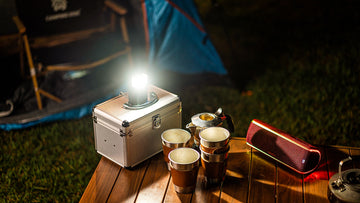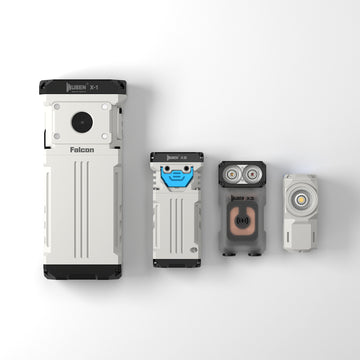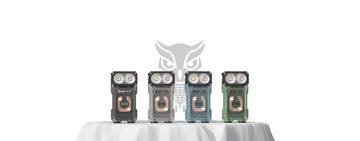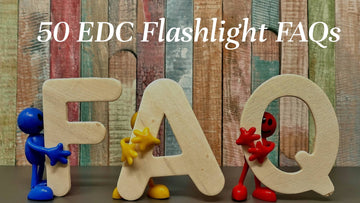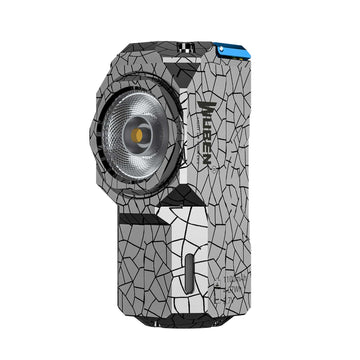
In today's digital age, smartphones have become an indispensable part of our lives, serving as personal assistants, communication tools, and even emergency devices. Among the many features smartphones offer, the built-in flashlight has proven to be incredibly useful in various situations. But have you ever wondered how many lumens a phone flashlight produces? Lumens, the unit of measurement for light output, play a crucial role in determining the brightness and effectiveness of a flashlight. In this article, we will explore the fascinating world of lumens and delve into the specifics of phone flashlight brightness.
To comprehend the concept of lumens, let's start with a simple definition. Lumens measure the total amount of visible light emitted by a source. In the context of flashlights, lumens represent the brightness level. The higher the lumen count, the brighter the light emitted. However, it's important to note that lumens solely indicate the amount of light produced and not necessarily the quality of that light.
The relationship between lumens and brightness is straightforward—the more lumens a flashlight has, the brighter the beam it will project. This brightness is influenced by various factors, such as the flashlight's design, reflector technology, and lens quality. While lumens provide a standardized way to compare flashlight brightness, it's essential to consider other aspects like beam distance, beam type, and beam angle for a comprehensive evaluation of flashlight performance.
Lumens in Phone Flashlights:
When it comes to phone flashlights, the number of lumens can vary depending on the model and brand. In general, phone flashlights fall within a range of 20 to 100 lumens. These flashlights are designed to serve as convenient and portable light sources for everyday use. However, it's worth noting that some modern smartphones boast flashlights with higher lumen outputs, reaching up to 200 lumens or more.
Advancements in technology have played a crucial role in enhancing phone flashlight performance. Manufacturers have been able to incorporate more powerful LED (Light-Emitting Diode) chips into smartphones, resulting in increased brightness levels. Additionally, improved reflector and lens designs have contributed to maximizing the efficiency and reach of the flashlight beam.
When comparing phone flashlights to other light sources, such as dedicated flashlights or headlamps, they typically have lower lumen outputs. Specialized flashlights can range from several hundred to thousands of lumens, catering to specific professional or outdoor applications. Nevertheless, phone flashlights are still remarkably useful in various everyday scenarios, offering ample brightness for tasks like finding items in a dark room or navigating through dimly lit environments.
Choosing the Right Lumens for Your Needs:
To determine the appropriate lumen output for your needs, it's crucial to consider the specific scenarios in which you anticipate using your phone flashlight. For instance, if you primarily plan to use it indoors or for close-range tasks, a lower lumen output might be sufficient. On the other hand, if you require a phone flashlight for outdoor activities like hiking or camping, a higher lumen output can provide greater visibility over longer distances.
When selecting a phone flashlight, it's important to consider factors beyond lumens alone. Factors like beam distance, beam type (flood or spot), battery life, and overall durability should also be taken into account. It's a delicate balance between brightness and practicality. Opting for the highest lumen output might lead to shorter battery life, while choosing a lower lumen output might not provide the desired brightness in certain situations.
Lumens serve as a critical metric for measuring flashlight brightness, including phone flashlights. Understanding lumens allows us to make informed decisions when selecting the most suitable phone flashlight for our needs. Phone flashlights typically range from 20 to 100 lumens, but advancements in technology have pushed some models beyond 200 lumens. By considering various factors such as intended usage scenarios, beam distance, and battery life, we can find the perfect balance between brightness and practicality in our phone flashlights. So next time you reach for your phone flashlight, remember that those lumens play a significant role in illuminating your path.
To comprehend the concept of lumens, let's start with a simple definition. Lumens measure the total amount of visible light emitted by a source. In the context of flashlights, lumens represent the brightness level. The higher the lumen count, the brighter the light emitted. However, it's important to note that lumens solely indicate the amount of light produced and not necessarily the quality of that light.
The relationship between lumens and brightness is straightforward—the more lumens a flashlight has, the brighter the beam it will project. This brightness is influenced by various factors, such as the flashlight's design, reflector technology, and lens quality. While lumens provide a standardized way to compare flashlight brightness, it's essential to consider other aspects like beam distance, beam type, and beam angle for a comprehensive evaluation of flashlight performance.
Lumens in Phone Flashlights:
When it comes to phone flashlights, the number of lumens can vary depending on the model and brand. In general, phone flashlights fall within a range of 20 to 100 lumens. These flashlights are designed to serve as convenient and portable light sources for everyday use. However, it's worth noting that some modern smartphones boast flashlights with higher lumen outputs, reaching up to 200 lumens or more.
Advancements in technology have played a crucial role in enhancing phone flashlight performance. Manufacturers have been able to incorporate more powerful LED (Light-Emitting Diode) chips into smartphones, resulting in increased brightness levels. Additionally, improved reflector and lens designs have contributed to maximizing the efficiency and reach of the flashlight beam.
When comparing phone flashlights to other light sources, such as dedicated flashlights or headlamps, they typically have lower lumen outputs. Specialized flashlights can range from several hundred to thousands of lumens, catering to specific professional or outdoor applications. Nevertheless, phone flashlights are still remarkably useful in various everyday scenarios, offering ample brightness for tasks like finding items in a dark room or navigating through dimly lit environments.
Choosing the Right Lumens for Your Needs:
To determine the appropriate lumen output for your needs, it's crucial to consider the specific scenarios in which you anticipate using your phone flashlight. For instance, if you primarily plan to use it indoors or for close-range tasks, a lower lumen output might be sufficient. On the other hand, if you require a phone flashlight for outdoor activities like hiking or camping, a higher lumen output can provide greater visibility over longer distances.
When selecting a phone flashlight, it's important to consider factors beyond lumens alone. Factors like beam distance, beam type (flood or spot), battery life, and overall durability should also be taken into account. It's a delicate balance between brightness and practicality. Opting for the highest lumen output might lead to shorter battery life, while choosing a lower lumen output might not provide the desired brightness in certain situations.
Lumens serve as a critical metric for measuring flashlight brightness, including phone flashlights. Understanding lumens allows us to make informed decisions when selecting the most suitable phone flashlight for our needs. Phone flashlights typically range from 20 to 100 lumens, but advancements in technology have pushed some models beyond 200 lumens. By considering various factors such as intended usage scenarios, beam distance, and battery life, we can find the perfect balance between brightness and practicality in our phone flashlights. So next time you reach for your phone flashlight, remember that those lumens play a significant role in illuminating your path.
Tags:
Related Articles

